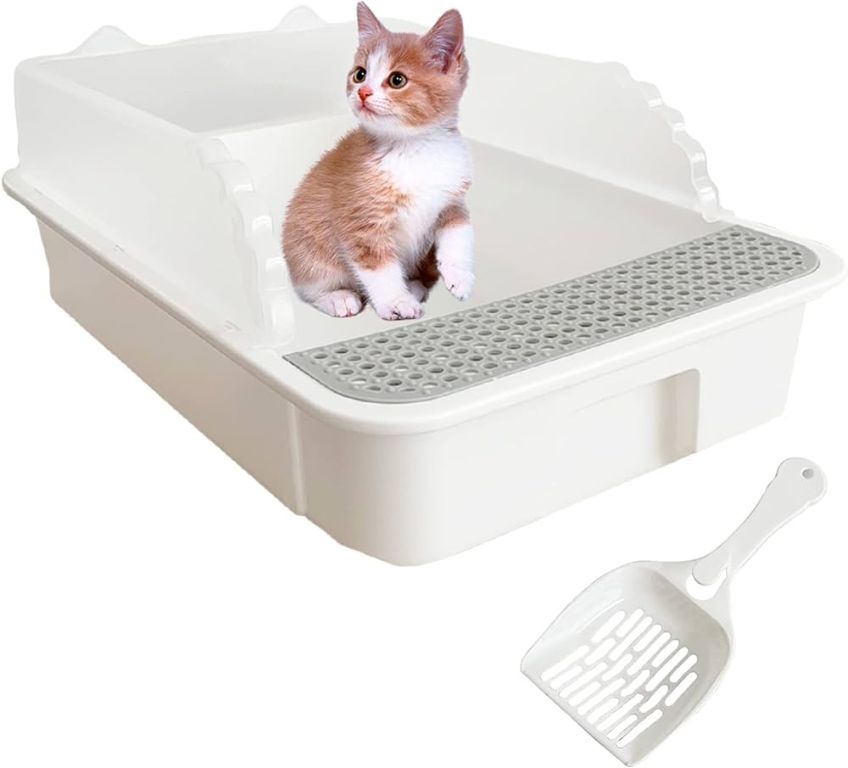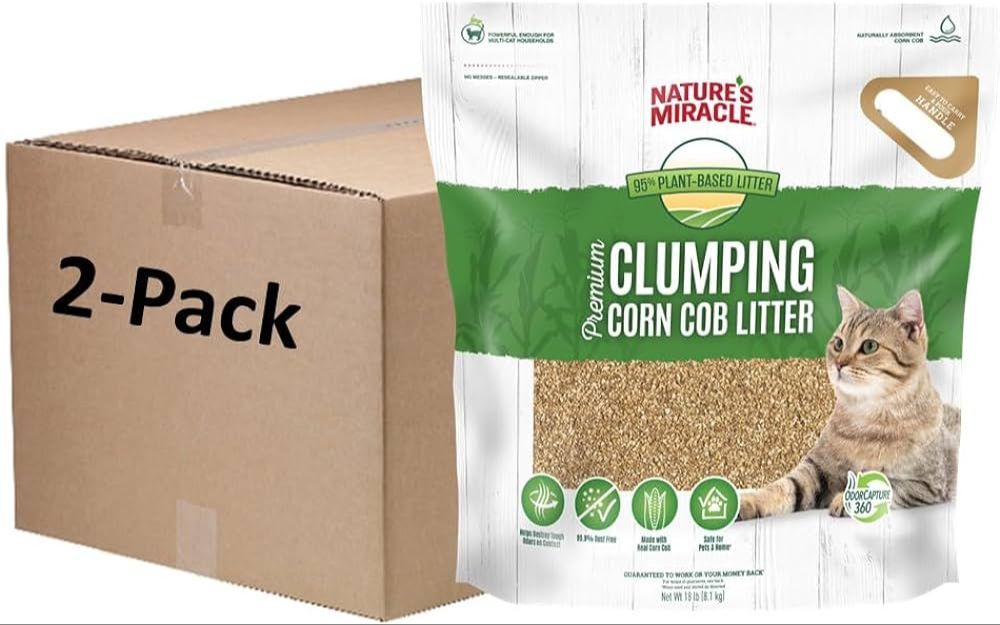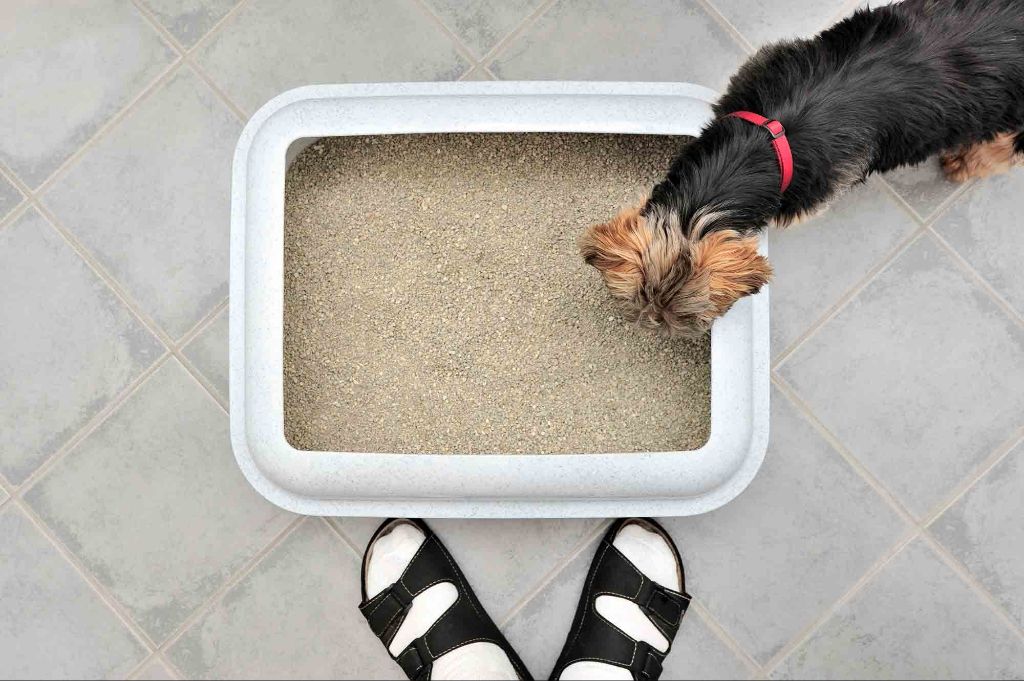Introduction
It’s not uncommon for dogs to show interest in a cat’s litter box, sniffing around and even tasting the litter inside. While eating small amounts of clay-based or crystalline litters may only cause mild stomach upset, ingesting larger quantities can potentially lead to dangerous blockages. Understanding why dogs are drawn to cat litter, how much can hurt them, and what types are safer can help keep your curious canine out of trouble.
Dogs explore the world through their mouths, so sampling interesting smells like kitty litter can be instinctual. However, litter containment can also appeal as an indoor potty spot to dogs that aren’t completely house trained. Regardless of the motivation, dog owners need to be vigilant about keeping Fido away from the cat’s bathroom habits. Consuming clumping or clumping-style litters can clog the gastrointestinal tract, requiring emergency veterinary care. Being aware of hazards, preventive tactics and first aid steps is key to protecting dogs from excessive cat litter ingestion.
Dangers of Cat Litter for Dogs
One of the biggest dangers of dogs ingesting cat litter is intestinal blockage from clumping clay litters. Clumping clay litters are designed to form a solid clump when wet, allowing the urine to be scooped out. However, this same clumping action can occur inside a dog’s gastrointestinal tract if they eat the litter. According to research, clumping clay litter can expand to up to 10 times its original volume after absorbing moisture [1]. As the clumps of litter expand in the intestines, they can cause complete or partial blockages, which can be life-threatening if not treated promptly.
Blockages in the intestines prevent food and fluids from passing normally through the digestive system. Symptoms of an intestinal blockage include vomiting, diarrhea, painful abdominal distension, loss of appetite, and lethargy. Intestinal blockages are extremely dangerous and require emergency surgery to remove the obstruction and decompress the intestines. Therefore, dogs should be prevented from accessing and ingesting clumping clay litter.
Amount of Cat Litter that is Dangerous
Cats require a surprising amount of litter to use their litter box properly. Most cat owners provide 2-3 inches of litter in the box for their cat. With that much loose litter accessible, dogs who have access to a cat’s litter box can easily eat dangerous amounts.
As little as 1 teaspoon of cat litter can expand in a dog’s intestines and cause an obstruction (source). Even small amounts like this are enough to absorb moisture in the digestive tract and clump into a solid mass. Since cat litter is made to be highly absorbent, it doesn’t take much to cause problems.
Larger amounts of 1-2 tablespoons can clump even faster and cause a total blockage in the intestines. Dogs that eat clumping clay litter are most at risk, since this type turns to a solid clay chunk. But even non-clumping, crystal, paper, wheat, and pine litters can absorb moisture and obstruct the intestines when dogs eat them.

Some sources say a good rule of thumb is that a tablespoon of cat litter per 10 pounds of dog body weight can cause issues. So a 20 pound dog eating 2 tablespoons could develop problems. However the safest approach is to avoid access altogether, since even tiny amounts can be dangerous.
Signs of Cat Litter Toxicity
The most common signs of toxicity from cat litter ingestion in dogs include:
- Vomiting – One of the first signs is persistent vomiting. The dog may vomit repeatedly after eating cat litter.
- Diarrhea – Profuse, watery diarrhea is common. The dog may have frequent loose stools.
- Lethargy – The dog may become very tired and lethargic. They may be reluctant to move around.
- Loss of appetite – The dog may completely refuse all food and water.
According to Skoon Cat Litter, vomiting and diarrhea can occur within 30 minutes to 12 hours after ingestion. The vomiting may initially contain pieces of litter material. As toxicity progresses, dogs often become weak and depressed. They may exhibit abdominal pain.
Severe toxicity can also lead to tremors, seizures, elevated heart rate and respiratory distress. Immediate veterinary treatment is crucial if these life-threatening signs develop.
What Type of Cat Litter is Safe?
The safest type of cat litter for dogs is an unscented, non-clumping variety made from natural materials like paper, pine, wheat, or corn. Clumping litters can expand in a dog’s stomach if ingested, while scented litters contain chemicals that may be toxic. According to Puppy Go Potty (here), natural paper fiber dog litter provides a safe alternative to traditional clay or silica-based cat litters.

Unscented pine, wheat, or corn litters are also reasonable options. They are typically safe if consumed in small amounts, though dogs may experience an upset stomach. The key is choosing a non-clumping formula to minimize health risks. Consult your veterinarian if unsure which specific brand may be best for your dog.
Preventing Dogs from Eating Cat Litter
One of the most effective ways to keep dogs from getting into the litter box is to place it somewhere that is out of their reach. Many pet owners find success by putting the litter box in a closet, bathroom, or spare room and keeping the door closed or installing a baby gate across the doorway. The opening between the rails of a baby gate is often too small for a dog to stick their head through but allows cats easy access (Hill’s Pet Nutrition).
You can also build or buy a covered litter box with a cat door that is specially designed to keep dogs out. The opening is sized so that only your cat can enter and exit the litter box, while excluding your dog. There are some creative DIY options like building a box with an elevated cat entrance or using storage bins and cutting a hole for your cat (Instructables). This can be an effective solution if your dog is persistent about getting into the litter.

First Aid if Cat Litter is Ingested
If your dog has recently ingested cat litter, the first step is to try to induce vomiting. Use 3% hydrogen peroxide, giving 1 teaspoon per 5 lbs of body weight up to 3 tablespoons. You can administer the hydrogen peroxide orally with a syringe (no needle) or turkey baster. If vomiting doesn’t occur within 15 minutes, you can repeat the dosage one more time. Don’t induce vomiting if it’s been several hours since they ate the litter.
After inducing vomiting, call your veterinarian right away. Explain that your dog ingested cat litter so they can advise you further. There are risks to inducing vomiting at home, so getting prompt veterinary guidance is important.
According to the ASPCA[1], most clumping clay litters can expand in the stomach and intestines, creating an obstruction. Your vet may advise bringing your dog in immediately for evaluation and treatment. They’ll assess your dog’s symptoms and may perform diagnostics like bloodwork and x-rays to check for any signs of toxicity or obstruction.
Diagnosis and Treatment
If a dog shows signs of illness after ingesting cat litter, the owner should bring them to a veterinarian for an evaluation. The vet will do a physical exam and may recommend bloodwork or imaging tests to check for any obstructions or damage in the digestive tract.
One common diagnostic test is endoscopy, where a camera on a flexible tube is inserted down the throat to visually inspect the esophagus, stomach and upper intestines. This allows the vet to see any inflammation, ulcers or foreign objects that could be caused by the cat litter.
Treatment depends on the amount ingested and how long it has been in the dog’s system. In mild cases, the vet may induce vomiting and recommend a bland diet for a few days to allow the GI tract to rest and recover. They may also prescribe GI protectants or antibiotics.
If a large amount was ingested, surgery may be required to remove any obstructions or perforations caused by the cat litter. This is a more invasive treatment done under general anesthesia, but it may be necessary to save the dog’s life if the liter has caused significant damage or blockage [1].
In all cases, the vet will recommend monitoring for any ongoing symptoms like vomiting, diarrhea or lethargy after treatment. Long-term, dogs should be prevented from accessing cat litter to avoid repeat incidents.
Long Term Concerns
While eating small amounts of clumping cat litter may just cause temporary gastrointestinal upset, repeated incidents of cat litter consumption can lead to more chronic digestive issues in dogs. The clay in clumping litter can expand in the gastrointestinal tract when moistened, potentially causing obstructions or lacerations if dogs ingest it regularly over time. This is especially concerning if the litter contains sodium bentonite clay. According to veterinarians, long-term ingestion of clumping cat litter could potentially cause serious gastrointestinal problems that may require surgery to correct.
Additionally, repeated exposure to toxins from cat feces present in used cat litter could negatively impact a dog’s health over time. Bacteria like E. coli and Salmonella, as well as parasites like Toxoplasma gondii, can cause chronic diarrhea, vomiting, lethargy, and weight loss in dogs if they are continually exposed. Preventing access to the litter box is crucial for avoiding these potential long-term risks.
If a dog has a history of eating cat litter, veterinary monitoring for signs of obstruction or perforation is advised. Owners should also have the dog’s stool checked periodically for parasites. Addressing the behavior through training, supervision, or restricting access to litter boxes can help avoid lasting health consequences in litter-eating dogs.
Key Takeaways
Eating cat litter can be extremely dangerous for dogs due to the risk of intestinal blockages and toxoplasmosis infection. While small amounts may only cause vomiting or diarrhea, larger quantities can cause severe vomiting, lethargy, loss of coordination, difficulty breathing, and even death.
The biggest risks come from clumping litters, which can expand to over 30 times their dry size. Non-clumping litters are safer but can still cause blockages. Litters containing silica crystals, perfumes, or deodorizers are especially toxic.

Prevention is key – keep litterboxes well out of reach. If ingestion occurs, immediately call your vet or a pet poison helpline. Depending on amount consumed, they may advise inducing vomiting at home or emergency veterinary treatment. With quick action, most dogs recover fully.